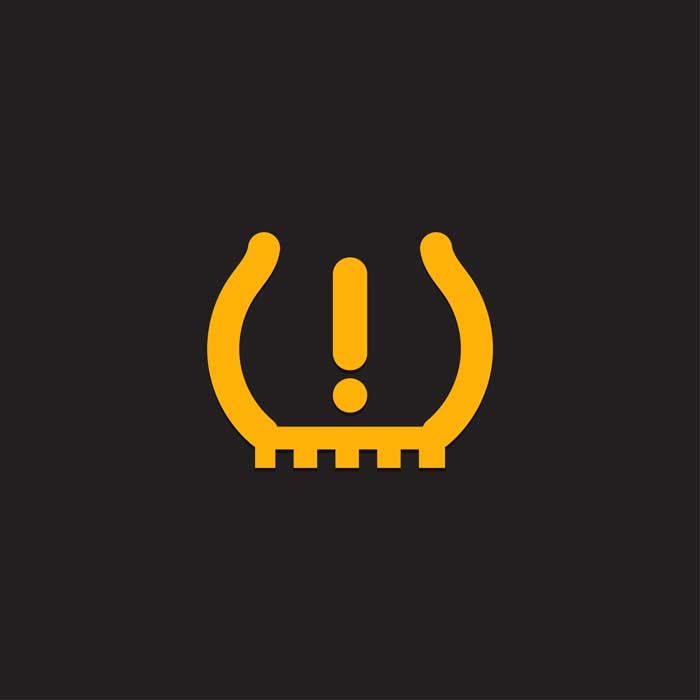Why Does My Tire Pressure Light Come on in the Cold

My TPMS Light Came On with Colder Temperatures?
Your vehicle's Tire Pressure Monitoring System (TPMS) plays a vital role in ensuring safety and optimal performance. This system alerts you when your tire pressure drops below a safe level. But why does the TPMS light often come on during colder winter temperatures? To understand this, think back to the simple joy of getting a helium-filled balloon as a child. On a warm day, the balloon would float high into the air, buoyant and full. On a very hot day, the pressure inside the balloon could increase so much that it might even burst. Conversely, on a cold day, the balloon would appear limp and deflated, struggling to soar. This same principle applies to the air inside your tires-cold weather causes the air to contract, reducing tire pressure, while warmer weather has the opposite effect. This fluctuation is why your TPMS light is more likely to come on during colder winter temperatures.
What is TPMS and How Does It Work?
TPMS is a system designed to monitor the air pressure in your tires and alert you if it falls below a safe level. Modern vehicles use either direct or indirect TPMS sensors:
Direct TPMS: Measures actual air pressure in each tire using sensors mounted inside the tire.
Indirect TPMS: Uses your car's ABS system to monitor wheel speed, inferring changes in tire pressure based on variations.
Maintaining proper tire pressure ensures optimal fuel efficiency, better handling, and prolonged tire life. A functioning TPMS is crucial safety system, helping to keep you safer on the road than a vehicle without a functioning system or no system at all.
The Science Behind Temperature and Tire Pressure
Temperature has a direct impact on tire pressure due to the physics of air pressure. As temperatures drop, so does the pressure inside your tires. Here's why:
- Air contracts when it's cold, causing a decrease in pressure.
- For every 10°F drop in temperature, your tire pressure decreases by about 1 PSI.
This is why colder winter mornings often trigger TPMS alerts. The light may turn off later in the day as the tires warm up from driving, but this doesn't mean the issue should be ignored.
Common Scenarios in Winter Driving
- Early Morning Alerts: TPMS lights often come on during cold mornings when temperatures are at their lowest.
- Temporary Normalization: As you drive, friction heats the tires, temporarily increasing pressure. However, this doesn't resolve the underlying issue.
- Persistent Alerts: If the light stays on, it's a sign that the tire pressure is consistently below the recommended level and needs immediate attention.
What to Do When Your TPMS Light Comes On
If your TPMS light comes on, follow these steps to address the issue:
- Check Tire Pressure: Use a reliable tire pressure gauge to check all tires, including the spare.
- Adjust Pressure: Check the tire information label on the driver's side rear door pillar first for the recommended tire pressure. If it's not there, refer to your vehicle's owner's manual for guidance. Inflate the tires to the specified levels.
- Seek Professional Help: If the TPMS light remains on, visit a service center to rule out sensor issues or leaks.
Risks of Ignoring a TPMS Warning
Underinflated tires can lead to several problems:
- Decreased Handling and Braking Performance: Low pressure affects your car's responsiveness and stopping distance.
- Increased Tire Wear: Uneven tire wear reduces tire life and increases the likelihood of a blowout.
- Fuel Inefficiency: Underinflated tires cause more rolling resistance, leading to higher fuel consumption.
Ignoring a TPMS warning can result in costly repairs or even dangerous accidents. Persistent alerts should be addressed promptly by a professional.

Why Choose Central Vermont Auto Mart for Tire Services?
At Central Vermont Auto Mart, we're committed to keeping you safe and your vehicle in top condition. Here's why customers trust us:
- Expert Diagnostics: Our trained technicians are skilled in handling TPMS issues and tire maintenance.
- Convenient Location: Located in Montpelier, we're your go-to service center for winter tire care.
- Seasonal Specials: Take advantage of our promotions for winter driving preparation.
- Customer-Centric Service: We prioritize your safety and satisfaction with every visit.
- Convenient Location: Serving Montpelier, Barre, and surrounding areas of Central Vermont with a clean waiting area with the amenities you would expect, comfortable seating, television, hot and cold beverages, Wi-Fi and more.
Your TPMS light is more than just a warning; it's a crucial safety feature that ensures your vehicle's tires are properly inflated. As colder temperatures cause fluctuations in tire pressure, staying proactive is key to avoiding bigger issues that could leave you stranded on the side of the road. Visit Central Vermont Auto Mart in Montpelier for expert tire services and keep your vehicle safe all winter long.
Schedule your tire service appointment today and drive safely this winter!
